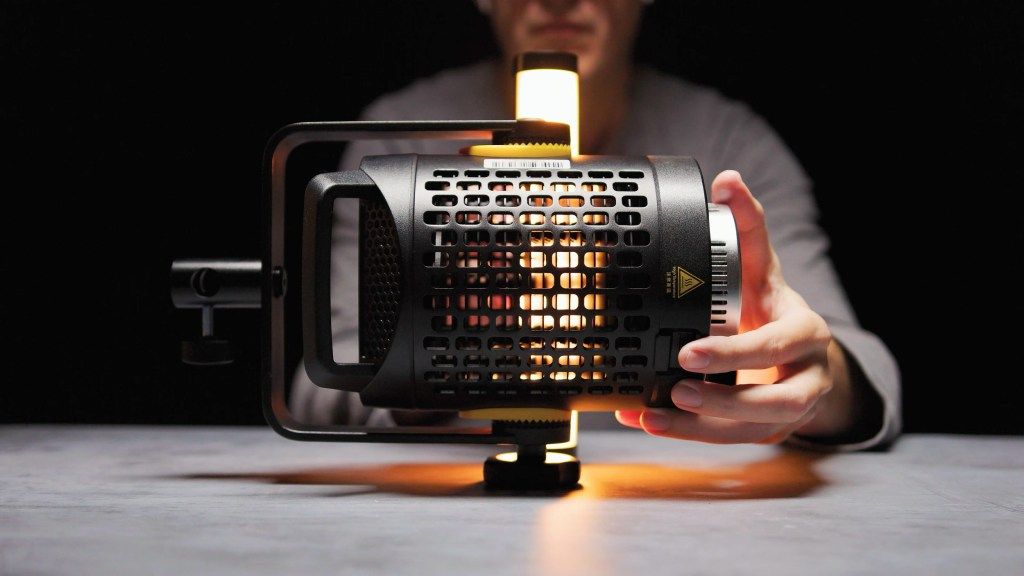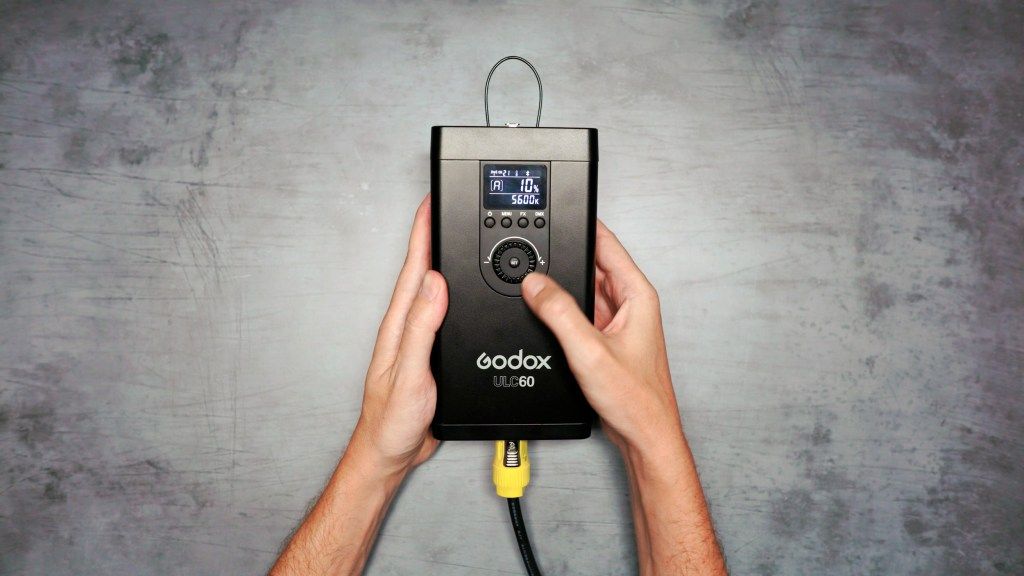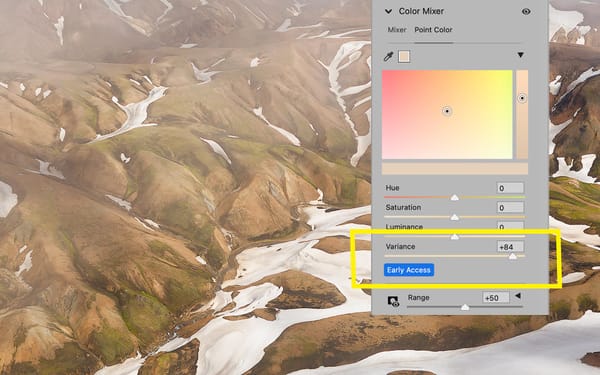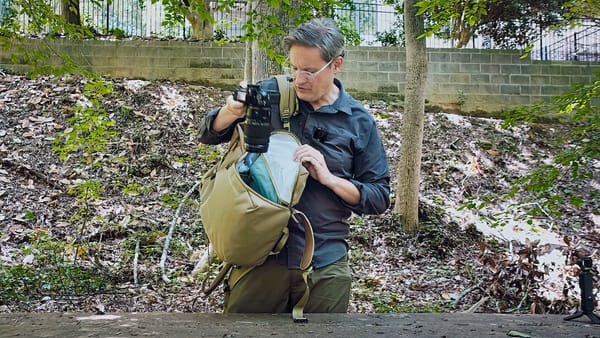Godox UL60 review: the sound of silence

Couple of years ago when I first started a channel over at YouTube, I purchased a Godox SL-60W. I chose the 60W because it provided 60 watts of continuous, daylight-balanced light, had a high CRI value, plus a Bowens mount for attaching modifiers. But most importantly, the 60W cost hundreds of dollars less than comparable studio LED lights from other companies.
But as good as the 60W was for videographers and filmmakers on a budget, it had one important fault: a noisy internal fan. The fan wasn’t crazy loud by any means, but if you used the 60W in a room with a live microphone, you could hear the light in the background of your recording.
Fast forward to today, and Godox is now offering the UL60 — an upgraded version of the SL-60W with redesigned hardware, additional features, and most importantly, quieter operation.
Disclosure: Godox sent me a UL60 for review, but they have not had any editorial input, nor have they read this review prior to publication. All opinions are my own.
Blissfully silent
Godox clearly took complaints about fan noise in the SL-60W seriously, for the UL60 doesn’t make a sound. Crank the UL60 up to 100% brightness, and you still can’t hear a thing.
How did Godox do it? Simple. They removed the fan.
Godox designed an entirely new enclosure with large holes all the way around the light. These holes allow the UL60 to dissipate heat and passively cool using the air in the room. For videographers and filmmakers recording with microphones nearby, this is a highly desirable feature, and the biggest selling point of this light.

Now let’s take a look at what else is new.
Hardware design
The construction and design of the UL60 is much nicer than the 60W. The fit and finish of everything is tighter and more professional looking. Godox has been investing more in their product design since the 60W, which you can see in all the hardware that comes with this light.
The body is made of lightweight, anodized aluminium. It has a u-shaped yoke for rotating the light, and a strong tightening knob for locking the light at an angle. In my tests, this knob was strong enough to hold everything, including a 48″ double parabolic softbox. In general, this design is way better than the cheap and rather flimsy handle on the SL-60W.
The UL60 also comes with an external power control. This piece of hardware modifies brightness, modes, groups, and powers the light on and off without touching the light. This is especially helpful when the light is boomed high overhead and not easily reachable.

The power controller may be powered through a standard wall outlet or by attaching a v-mount battery (sold separately). There’s also a DMX512 input for connecting the light to a professional lighting board.
I especially like the design of its bright yellow power cable. This cable inserts into the base of the controller, then twists to lock in place. The cable then can’t be accidentally pulled out. To unlock the cable, pull back on a silver latch, twist counterclockwise, then remove.
Godox is tastefully applying this yellow color to other parts of the hardware as well. There’s a splash of yellow on the v-mount battery latch, the tightening knob, and detailing on the light itself.
The light may be controlled through the aforementioned power controller, or with the free Godox Light app for iOS and Android. This app connects via Bluetooth, and is compatible with other bluetooth Godox lights as well. You can add multiple Godox lights to the app and control them all through one interface.
The light has an industry standard bowen’s mount for attaching all types of modifiers, including softboxes. I especially like the design of this large catch for locking and unlocking the modifier. Great design and construction.
Speaking of the bowen’s mount, the UL60 comes with a 7″ reflector for shaping and intensifying the light. When mounted it creates a bright, 30 degree beam spread.
Light output
As for the LED light itself, the UL60 is a COB LED, which stands for “Chip on Board”. This type of light uses an array of small, tightly packed LEDs inside this yellow silicon you see here. Once illuminated, all those individual LEDs mesh together and form a single beam of light.
Light output is continuous at a fixed, color temperature of 5600 kelvin, which is the temperature of natural daylight. The light is fully dimmable between 0 and 100%, and has a CRI value of 96 and TLCI value of 97 for accurate rendition of color in a subject when illuminated.
In addition to continuous light, the UL60 also supports a few special effects including flash, storm, television and broken bulb. These effects strobe and animate the light, but without changing its color.
Is 60 watts enough?
As for wattage, this is a 60 watt light. 60 watts is decent wattage for use in simple, three point lighting setups where the light is pointed at a subject. 60 watts may not be enough wattage though for more creative lighting scenarios — typically used in filmmaking — where lights are placed at a distance and heavily diffused for softer light.
But let’s get some real world numbers to test 60 watts of brightness in a key light. To test this out, I recorded video with the following setup (what I typically for videos on my channel).
- Canon EOS R5 with Sigma 35mm f/1.8 lens
- C-Log 3, ISO 800, 1/50 shutter, f/1.8 aperture
- UL60 with 38″ double parabolic softbox and honeycomb grid
- Atomos Ninja V with waveform display enabled
I cranked the UL60 up to maximum, 100% brightness, then progressively moved further away from the light until my skin tone hit 55% IRE on the monitor’s waveform. (FYI, 55% is what works best for me and my skin tone when exposing C-Log). In this test, I was able to stand ten feet away before my skin tone dropped below 55%.
To test the same setup with a non-prime lens, I stopped-down the aperture to f/2.5, and this time I was able to stand seven feet away at 55% IRE.
These results will be different depending on the type of camera and lens you’re using. But if you’re not a technical person, just know that you should be able to achieve proper exposure with your subject when positioned somewhere around 5-10 feet away.
If the subject is closer, simply turn the brightness down. If the subject is farther away, then you would most likely need a higher wattage light to achieve proper exposure.
For that, Godox also sells the UL150. This light is the same as the UL60, but outputs 150 watts of light. The UL150 is also passively cooled and completely silent just like the UL60.
Downsides of the Godox UL60
There’s a lot to like with the Godox UL60, but it does have a few shortcomings.
No padded carrying case

The UL60 does not come with a padded carrying case. All it comes with is a disposable, cardboard box. This means you may have to buy a third party case when carrying the light to a shoot or storing the light when not in use. In my opinion, a light of this quality should come with a case.
Effects are limited
As for the special lighting effects, I don’t think they’re particularly useful. The effects are limited by the single color temperature of the LED, so there’s only so much they can do to appear realistic. The UL60 is primarily a studio light, not a light for special effects. If you’re looking for special effects, there are plenty of RGB lights out there that do a better job than the effects you’ll find here. In general though, they’re nice to have. I just wouldn’t buy this light for the effects.
Mobile app decent but not consistent
The Godox Light mobile app generally works fine with the UL60, though I did experience some occasional Bluetooth dropouts that caused the light and app to lose their handshake. Additionally, the Godox Light app is not compatible (at least at the time of this review) with other, not-so-old Godox LED lights including the VL150. Perhaps Godox is going through a transitionary phase with their lights and mobile apps right now, but I was disappointed that I could not control both the UL60 and VL150 using the same app.
Final thoughts
At the time of this video, the Godox UL60 retails for $299 in the United States. This is higher than COB LED lights with similar wattage from other companies, but the fan-less operation, solid construction, and separate light control make the UL60 a more durable, higher quality light overall. In my opinion, if you’re shopping for a sixty watt LED, it’s worth spending a little more to get the features this light offers.
For videographers or filmmakers shooting interviews, live streams, YouTube videos, the UL60 is a great light. Photographers can of course use it as well, because the UL60 is just like any other daylight balanced LED studio light, but completely silent when in use.
Video
Below is the video version of this review from my YouTube channel.



